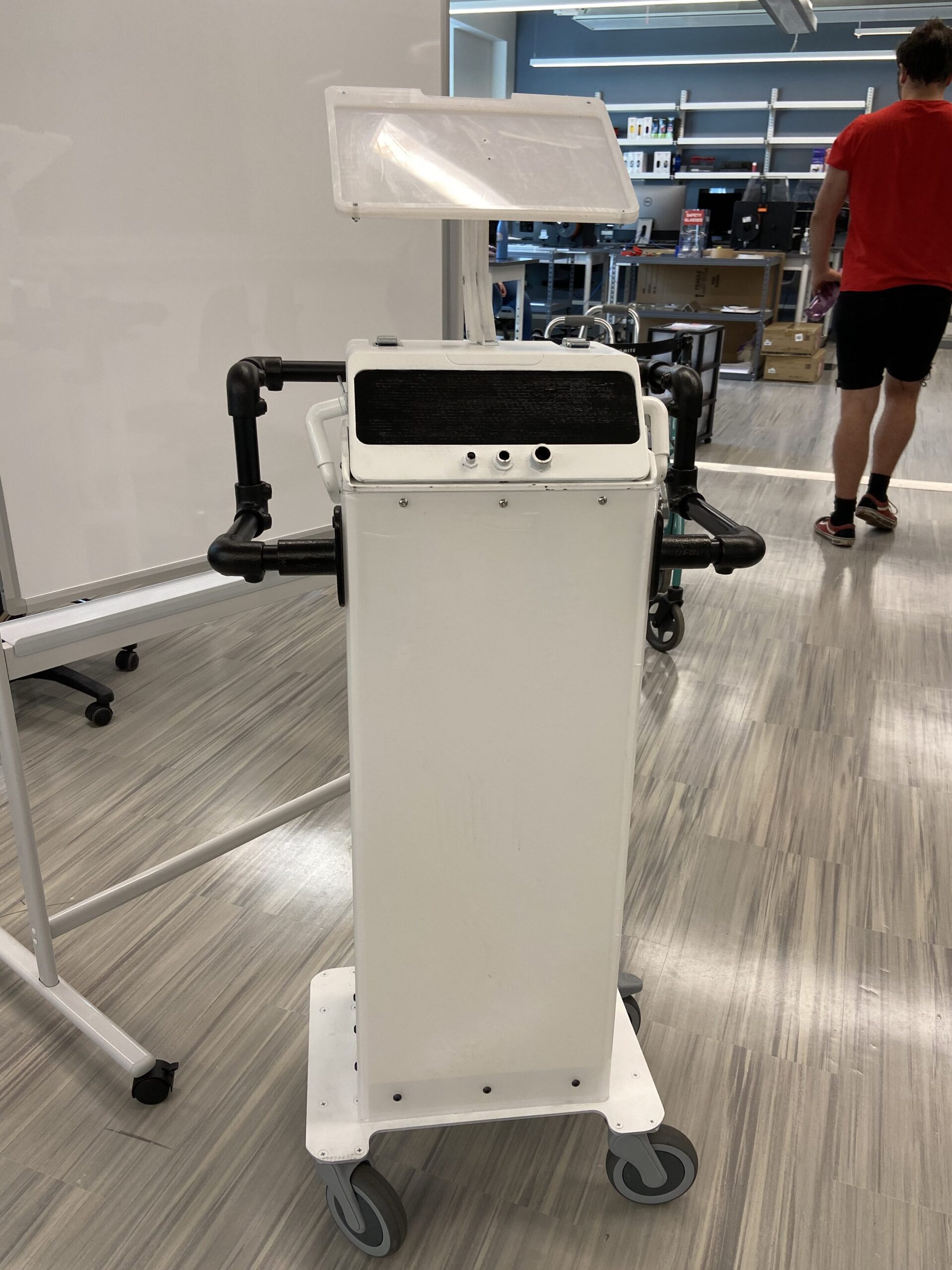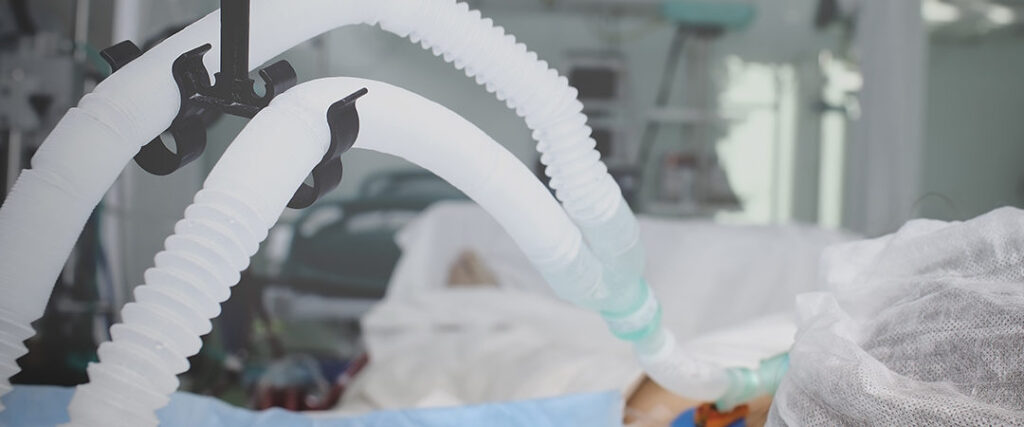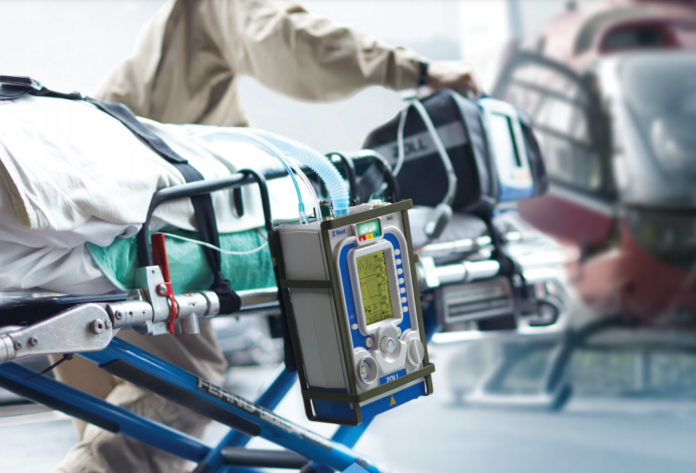One of the biggest problems facing the care of patients on ventilators is the transportation around the hospital while maintaining ventilation. The patients who are attached to ventilators are some of the most critical patients in the hospital. Being put onto a ventilator means that you are unable to sufficiently breathe on your own and require help from a machine. If you are going through routine checks or are in some state of cardiac arrest, a team of nurses, doctors, and a respiratory therapist. Will over-see your transportation from the ICU to testing (most commonly CT, and MRI), and back. For these patients to be able to leave the ICU, they need to be unplugged from a static ventilator and reattached to a transport ventilator.
Transport ventilators are a smaller, less complex version of the standard ventilators used. Transport ventilators are often attached to the side of a hospital bed and travel with the patient throughout the hospital. Transport ventilators are made very durable due to the common scenario of them being dropped and bumped into walls. If a Transport Ventilator were to fail at some point during the transport, the immediate response is to disconnect the patient and reconnect them to a less reliable, manual ventilation. To learn more about this I spoke with a Respiratory Therapist. Through this interview I learned that one of the biggest problems they are currently facing in the ICU is overwhelming amount of people who are currently on ventilators. For one Respiratory Therapist there are 6 patients, and one of the problems they are seeing with the transport ventilators is that because they are being passed from patient to patient they don’t have time to charge and can very quickly run out of battery.
This problem has been attempted to be solved in the past by creating a docking system for the transport ventilators to the main ventilator. That way the same ventilator will always be traveling with the patient, and the medical professionals will not have to worry about the transport portion of the ventilator running out of battery.

This solution failed for many reasons, one being the transport portion of the device was too heavy and also unable to do all of the functions it needed to do during transport. There was also no obvious way of attaching the transport portion to the patients bed. Past designers also included handles so that once patients were more recovered they would be able to walk around the hospital with the ventilator. This is all great starting points but, there is work to be done to improve this current system.
To go into more detail on why the current system is failing I interviewed a Nurse Practitioner. This was helpful to see the point of view from someone who sees a patients progress from admittance into recovery. The NP stated that one of the biggest problems nurses have with the current ventilators is that they have a small background of training but not all of the ventilators are the same and when things go wrong instead of trying to trouble shoot on the machine their instinct is to begin manual ventilation and then call a respiratory therapist. The problem with manual ventilation is that it is different pressure and length of breath for each individual nurse. Also, nurses are unable to replicate the exact pressure and length of breath that the transport ventilator was providing. The NP also suggested that most times they are transporting patients on ventilators it is because they are in an emergency and need to get them to a test or the OR very quickly. With almost every Nurse I spoke with about ventilators their initial response was a sigh and generally bad feedback on the current system.
Another issue with the current ventilators, is that the tubes and wires connected from the machine to the patient are very long and have no specific place to be put during transport. In most cases, nurses will place the tubes on top of the patient so they are unable to get yanked or caught on anything in the chaos of the transport. Designers have created a hanger to hold the tubes in place but it doesn’t do much for the excess tubes and can easily be displaced.

During surgery tubes can get in the way and make it much harder for the surgeon to do their job. If patients are awake for transport, the chaos of wires and tubes can startle the patient and disrupt their breathing. Every so often the transport ventilator is knocked onto the ground and although the machine may be fine, if the anxiety of the patient goes up it can mean the machine needs to also be adjusted.
Overall healthcare professionals are seeing that the more they transport patients, the more they unplug them, the more likely patients are going to fail to be healthy again. Currently there is a 30% success rate for those on a ventilator. Most patient’s will go through the process of desynchronizing from the ventilator to coming off and then immediately need to go back on.
Ventilator recovery process consists of the Respiratory Therapist keeping track of a patients ability to breath and weeing them off the ventilator by each day decreasing the amount of oxygen they are being given to hopefully have the patient eventually breathing on their own. Although the process is overseen by the Respiratory Therapist everyone in the ICU is responsible for the patient’s recovery.
To help address some of these issues I have began brainstorming solutions for the different pain points in the process. For example, because nurses initial reaction to a failing transport ventilator is to manually ventilate than we could standardize manual ventilation. We could create a product that helps any nurse using the bag to have the same depth and pressure applied to the bag.

Manual Ventilation is something that most nurses are comfortable with and instead of learning a new skill they would be adjusting one that they are familiar with.
Another solution could be for the loose wires and tubes. If the tubes were to come from inside the rails of the hospital bed than they would be able to be adjust for each individual patient. While also leaving the excess inside of the rails. For the transport ventilator being knocked off of the bed during transport perhaps the ventilator is attached to the foot or the head of the bed. That way the ventilator will not be kicked or bumped into walls.
There are so many different possible solutions out there to help create a safer environment for the patient and with the help of interviewing and shadowing healthcare workers I should be able to narrow down the needs of those involved. I will continue to research and will soon be able to get a better understanding of how healthcare workers deal with these tough situations.
Sources:




